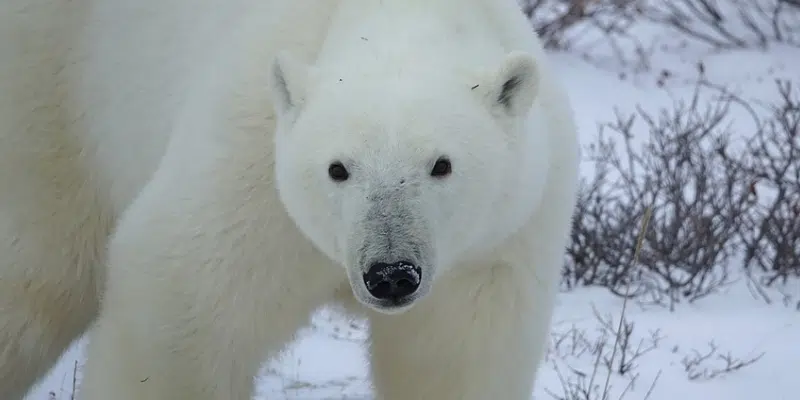Polar bear season has begun along the southern coast of Labrador and the north east coast of Newfoundland.
Senior Wildlife Biologist with the Department of Fisheries, Forestry and Agrifoods, Bob Rogers says polar bears typically start following the Arctic ice southward in search of plentiful seals to eat once they emerge from their winter dens in March and April.
While they usually stay on the ice, they sometimes venture onto land.
Rogers says polar bears are the largest bears in the world and are very dangerous if you don’t give them a wide berth.
He says males can reach up to 800 kg (or approximately 1700 lbs) but typically are in the 500 kg range, (1100 lbs) while females are about 400 kg or 800 pounds. He says they can move a lot faster than most people and “can close the gap on you pretty quickly.”
Polar bear sightings have been reported in recent days in Port Hope Simpson, Black Tickle, St. Lewis in southern Labrador and in St. Carol’s and St. Lunaire-Griquet on the Great Northern Peninsula.
If the bear does not see you:
Quietly back away and leave the area;
Try to stay downwind of the animal;
Keep an eye on the bear; and
Never get between a bear and her cubs.
If the bear has seen or smelled you:
Remain calm;
Give the bear space and a route to get away;
Back away but do not run;
If you must speak, do so calmly and firmly; and
Avoid direct eye contact with the bear.
Polar bear sightings in the St. Anthony area should be reported to the Roddickton Forestry Management District Office at 709-457-2300, or the after hour emergency line at 709-457-7243.
Polar bear sightings in southern Labrador should be reported to the Port Hope Simpson Forest Management Office at 709-960-0400, or the after hour emergency line at 709-897-7116.
























